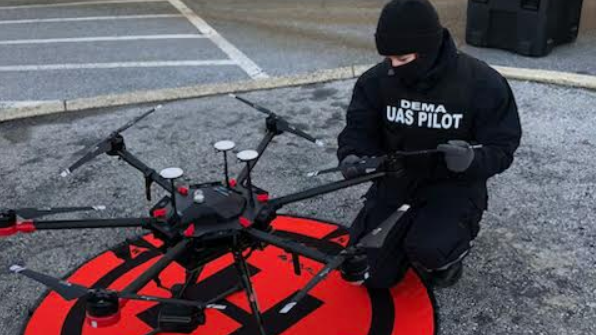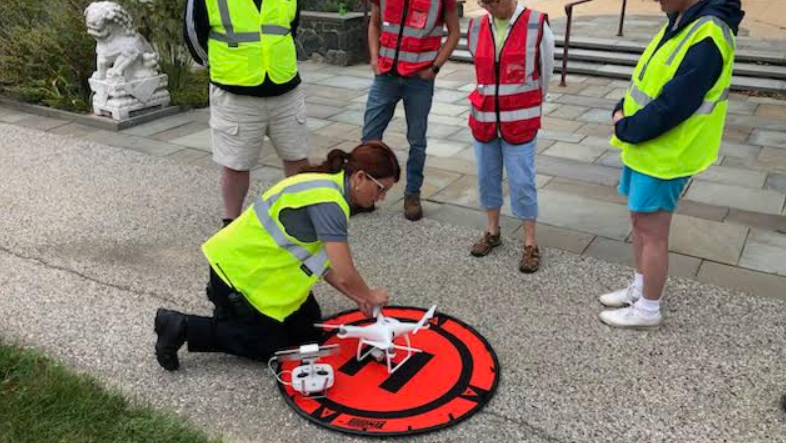How Drones Are Transforming Public Safety Operations: DFR Programs, Challenges, and Future Trends
The opening panel of the Drone Thought Leadership Summit, co-hosted by University of Virginia’s Center for Public Safety and Justice and DRONERESPONDERS, brought together leaders from law enforcement and fire services to explore the current and emerging landscape of drones in public safety. Their conversation underscored how quickly drones have redefined how communities are protected.
Drones as a Force Multiplier
“Drones are a force multiplier in public safety,” said DJ Smith, Senior Technical Surveillance Agent with the Virginia State Police. “They give us a high point in the sky to see things we can’t from the ground.”

Public safety agencies across the U.S. now operate more than 7,000 Unmanned Aircraft System (UAS) programs, a number that far outpaces the 300 traditional aviation units relying on helicopters or fixed-wing aircraft. It’s no surprise: unmanned aerial vehicles (UAVs) provide real-time aerial awareness at a fraction of the cost, giving responders faster intelligence, safer operations and sharper decision-making. According to a recent Verizon Frontline survey, more than half of agencies expect to use drone operations within five years.
75% of the UAS programs in the U.S. currently support law enforcement, with the rest serving fire, emergency management or search and rescue. Tactical and emergency response UAV missions range from traffic accident reconstruction and suspect pursuit to crowd monitoring and hazmat response. In terms of how UAVs impact fire services, incident commanders track fire behavior, locate hotspots and improve ground safety. “They’re a game-changer,” said Deputy Fire Chief Scott Carpenter.
“Drone technology is the biggest trend in law enforcement since the introduction of the police radio. From missing person searches to real-time crime responses, drones are reshaping how agencies protect communities and setting the stage for a future where unmanned aircraft could be automatically deployed at the first call to 911.”
— Charles Werner, DRONERESPONDERS
The Rise of Drones as First Responder (DFR)
Among the many ways UAS programs are being deployed, one of the fastest-growing and most transformative models is the Drone as First Responder (DFR) program. When a 911 call comes in, every second matters. Increasingly the first responder isn’t a squad car: it’s a drone. Captain John English of Chula Vista Police Department, home of the nation’s first DFR program, explained: “Our drones can be on scene in 90 seconds with an aerial overview, giving officers intelligence before they arrive and giving them powerful tools for de-escalation. Officers were initially resistant, but now they expect UAVs. It’s just part of how we respond.”
The momentum is undeniable. In 25% of calls, drones clear ground units before they arrive, a condition that frees public safety responders for other emergencies. A May 2025 Federal Aviation Administration (FAA) rule change streamlined DFR program approval barriers and caused a jump from just 50 authorized programs over the previous six years to nearly 600 approved programs in four months. As a result, DFR became one of law enforcement’s fastest-growing trends. “2025 is the year DFR programs went mainstream,” Werner emphasized.
Challenges and How Agencies Are Responding
At the Drone Thought Leadership Summit, panelists pointed to four persistent challenges:
- Airspace deconfliction: avoiding conflicts with manned aviation during emergencies.
- Policy limitations: “Technology has surpassed where state law is,” said George Mason University’s Deputy Chief Michael Lighthiser, referring to the limited authority state and local agencies have when using UAVs in law enforcement settings.
- Thorough training: Carpenter stressed how “rigorous internal stakeholder training has been essential to the success and buy-in of our program.”
- Public perception: Noting lingering concerns about surveillance, Lighthiser added that “transparency and communication are the only ways to overcome” a generic skepticism that drone technology could lead to an invasion of privacy.
Building the Future Responsibly: What’s Next?

Lighthiser stressed the need to build community trust from the outset. This process includes educating the public and elected officials that UAVs support incident response as opposed to random surveillance. Smith highlighted the value of strong FAA relationships, how even in Northern Virginia - the nation’s most congested airspace - his team has “never taken more than four minutes to get flight clearance.” Werner reminded agencies that it's common to start small, that “most programs launch with less than $10,000.” He recommends talking to other agencies first so you can learn from their experiences.
Panelists at the summit also pointed to what’s next. Smith emphasized integrating DFR feeds with mapping and mesh radio systems for a single, coordinated interface. Lighthiser highlighted how universities are pairing UAS programs with cutting-edge research, from forensic cadaver labs to cold-case investigations. The challenge now is ensuring this transformation happens responsibly, transparently and with community trust at its core.


